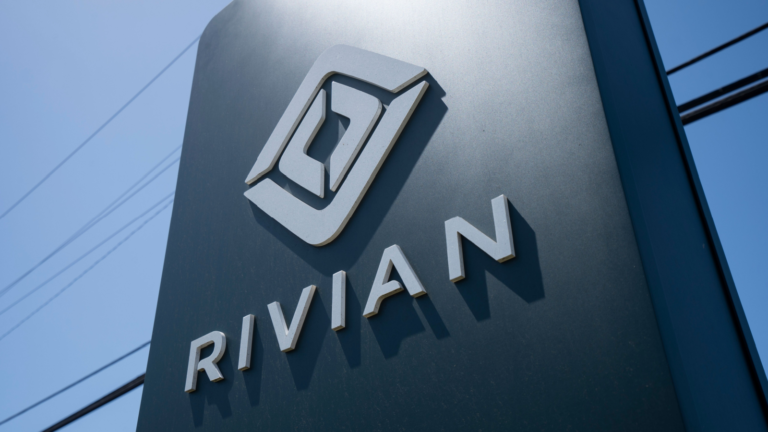Rivian (NASDAQ:RIVN) has popped recently. Rivian stock has gained approximately 16% over the past month.
A significant portion of the gains have resulted from the June 26 announcement that Volkswagen Group (OTCMKTS:VWAGY) would invest up to $5 billion in Rivian as part of a joint venture between the two companies, focusing on next generation electronic architecture and software.
As a part of the deal, VW will initially invest $1 billion, with the remaining $4 billion to flow over the next three years.
As a result, Volkswagen would become one of Rivian’s largest shareholders alongside Amazon (NASDAQ:AMZN) who owned 16.4% as of April 24.
While there is no doubt having deep pockets like VW to backstop Rivian’s development will help keep it on a positive trajectory, these types of partnerships have a way of imploding before they’ve delivered a reasonable return on investment for everyone involved.
However, the money should help get Rivian’s more affordable R2 up and running in 2026. That could make it the company’s savior. Here’s why.
The Margins Have Got to Improve
The good news from Rivian’s Q1 2024 report is that it only lost $38,784 per vehicle delivered in the quarter, down from $67,329 a year earlier, and from $43,372 in Q4 2023. It’s headed in the right direction.
The problem is that it still lost $1.84 billion from operations during the first quarter, up slightly from a year earlier, on $1.20 billion revenue, nearly double a year earlier.
As a result, the accumulated deficit for Rivian stock at the end of March was a whopping $20.0 billion.
It will take a tremendous amount of profit to erase that deficit. Needless to say, it’s not going to happen overnight.
At the very least, its gross margins will have to turn positive. They were -44% in the first quarter.
By comparison, Tesla (NASDAQ:TSLA) took five years from Elon Musk first getting involved with the company in February 2004 to 2009 when it generated a gross profit on automotive sales of $9.5 million.
Rivian’s first deliveries started in September 2021. If it’s to match Tesla’s pathway to profitability, it should start generating an automotive profit by late 2026, just as the R2 production gets going.
The R2 Is the Lowest Common Denominator
I believe the best way to solve most problems is by focusing on the lowest common denominator.
Here, it is generating a gross profit from the R2, which is expected to start at $45,000, well below the R1S ($75,000) and R1T ($70,000), you’ll be able to make a boatload from your higher-priced vehicles.
Rivian is following the Tesla road map by starting with more expensive vehicles and over time and profit, moving to more reasonably priced EVs. As longtime Tesla shareholders would tell you, it’s made them plenty, so it’s not the worst move.
However, consider BYD (OTCMKTS:BYDDY).
Its playbook is to keep prices low in China, its home market – its attractive BYD Dolphin EV sells for $16,500 in China – but makes it more expensive in international markets such as Germany, where it retails for $37,400.
According to Reuters, the Dolphin sold for between 39% and $178% higher outside China depending on the market.
In this case, and it’s clearly an apples-t0-oranges comparison, BYD is subsidizing its Chinese sales with higher revenues per vehicle elsewhere. The lowest common denominator in this case is that the average German car buyer can still afford the Dolphin at inflated prices.
The R2 Growth and Rivian Stock
The R2, which is expected in the first half 2026, already has over 100,000 preorders. It got 68,000 in just one day when it introduced the R2 in March.
The company’s plant in Normal, Illinois, will have an annual production capacity of 215,000 EVs by the time the R2 comes out. The lower-priced vehicle will represent 72% of the capacity with the R1S and R1T accounting for the rest.
Not only will the launch of the R2 force the company to figure out how to make money from a vehicle that’s $25,000 to $30,000 less than its other products, but it will add economies of scale to its operations, lowering its costs, getting it closer to gross profits rather than losses.
As my InvestorPlace colleague, Faisal Humayun recently pointed out, the R2 launch will generate cost savings of $2.25 billion relative to the company’s original projections.
Further, the R3 launch after the R2, will cost even less than the R2. It will provide additional economies of scale to its overall operations.
If you’re an aggressive investor, I would agree with Humayun’s take to accumulate Rivian stock under $20. If not, buy VW stock instead.
On the date of publication, Will Ashworth did not have (either directly or indirectly) any positions in the securities mentioned in this article. The opinions expressed in this article are those of the writer, subject to the InvestorPlace.com Publishing Guidelines.
On the date of publication, the responsible editor did not have (either directly or indirectly) and positions in the securities mentioned in this article.

